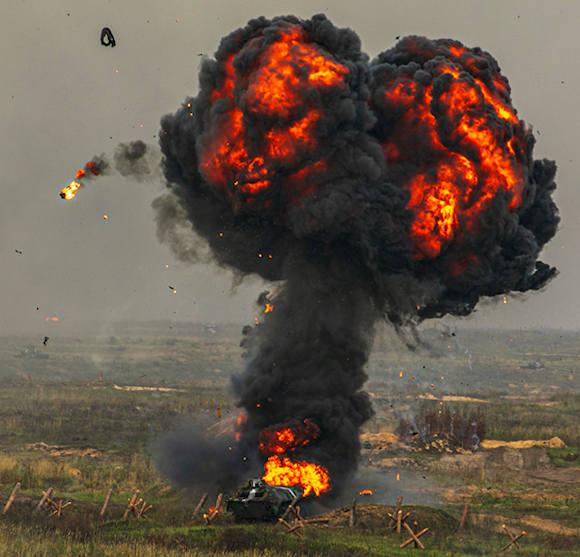Against the background of the diplomatic crisis that has already been opposing Ukraine, the United States of America and their NATO partners on the one hand, and the Russian Federation (with the two secessionist republics of the Donbass area since the beginning of November 2021) other), the latest negative developments in the negotiations have had the consequence of making people talk once again about the possibility that Russia can resort to an act of force to subdue Ukraine.
In light of these facts it is therefore necessary to ask: what are the real chances of Russia invading Ukraine? And can Ukraine withstand a massive Russian military offensive in the lands of ancient "Scythia Maior"?
To make serious predictions in this sense, even before evaluating the "kinetic force" of the duelists, it is necessary at the beginning to understand how we got to this point and what are the interests in the field.
The first thing to say in the above context is that, unfortunately, there is a nasty habit here in the West of considering Russia's national (or imperial) interests as "illegitimate a priori". Unfortunately, this mental and cultural setting is very old and will certainly not disappear tomorrow. It is useless to address the complex genesis of this phenomenon now, so for the moment we will leave it as "established" and take "russophobia" as a fact.
At the same time it is necessary to warn the so-called "pro-Putinians", including our own, that although "russophobia" absolutely exists, there is also the awareness that Russia is a geopolitical actor who protects its national interests using all the "dirty tricks" that others also use. As an example, we must mention the shameful press campaign of the Russian media, both official and online, in addition to the inevitable factories of troll, who took the opportunity to unleash an authentic terrorist campaign against Italy in the darkest moments of the Covid-19 pandemic while at the same time Russia was on the front line to help Italy by sending a contingent of "Troops Chimiche ”which contributed to the disinfestation of various areas of Lombardy. Russia's attitude at this juncture was frankly unacceptable given that on the one hand the Russians were offering supposed help and on the other they blew the fire of discontent and “Covid denial” in order to provoke the destabilization of our country; this is good to remember!
In geopolitics there are no devils and saints and, least of all, emotions. It is therefore necessary to professionally map the geopolitical interests of the individual "boxers" appearing in the international "ring" and try to understand, in the intertwining of opposing national interests, which are the prevailing ones as well as what are the gains they would obtain, or the losses that our country, the Italian Republic, would suffer in getting involved in this or that dispute.
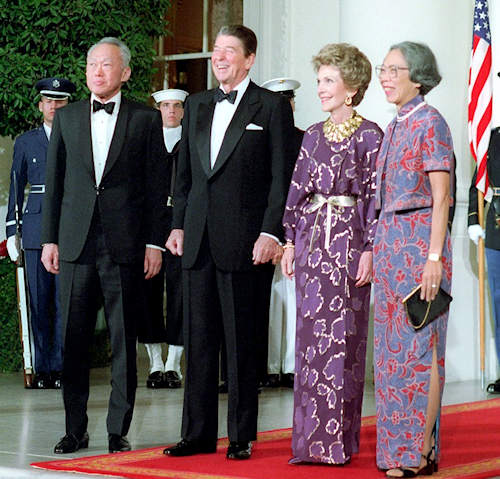 Using the words of the genius of politics and geopolitics who was Lee Kuan Yew (photo), the first Prime Minister of the history of the Republic of Singapore: “The national interests of different countries can be divided into two categories: marginal issues and fundamental issues. The difference between them is that, for marginal issues, it would be folly for a country to go to war, while for fundamental issues, it would be folly for the same country not to go to war ". The simplicity and linearity of this reasoning is such that I have decided to use it and make it mine in this context.
Using the words of the genius of politics and geopolitics who was Lee Kuan Yew (photo), the first Prime Minister of the history of the Republic of Singapore: “The national interests of different countries can be divided into two categories: marginal issues and fundamental issues. The difference between them is that, for marginal issues, it would be folly for a country to go to war, while for fundamental issues, it would be folly for the same country not to go to war ". The simplicity and linearity of this reasoning is such that I have decided to use it and make it mine in this context.
Whatever the sentiment of individuals regarding Russia, it is therefore necessary to approach the crisis in Ukraine using what we will now baptize: "Lee Kuan Yew Theorem".
The question now arises spontaneously: Where does Ukraine fit in the hierarchy of "issues" of the different countries involved in the new "Great Game"?
For European countries (both inside and outside NATO and the European Union) and for the United States of America itself, Ukraine represents a marginal issue. Although precisely in this period falls the eighth anniversary of the events of Euromaidan (which the present author refuses to consider "popular motion", having been a direct witness of the events in Ukraine at the time) and that since then the Ukrainian leaders have tried in every way to derail the once very important economic relations between Kiev and Moscow, even today and despite the "diversification", Russia continues to remain, together with China, Ukraine's main economic partner.
If the great Western strategy managed to achieve something "tangible" it was to make Ukraine slip into the arms of the "Dragon", who promptly found a place for "the Ukrainian ear" in the grand design of the so-called "New Way" of the Silk "; we wanted to get rid of the Russians, instead we found the Chinese, nice irony!
To be sure, some European countries have managed to forge a certain type of economic relations with Ukraine, such as Poland, Germany and even our Italy. However, if we take a closer look, we would discover that, in 2020 (the first year of the pandemic) Italy absorbed only 3,9% of Kiev's exports and provided 4% of imports. Italy therefore has no strategic economic interests in the territory of Ukraine, except for the imperative that the pipelines that bring Russian gas to us remain fully functional.
From a geotrategic point of view, it could be argued that, in a context of "Cold War 2.0", Ukraine can still serve European countries as a sort of buffer zone against Russia. This was paradoxically true before Euromaidan! Since then, the direct and indirect involvement of Western countries in the lands that were the home of the ancient Scythian barbarians has blown away all schemes and has actually led NATO to "border" with Russia. The result is that Western countries have nevertheless had to pump a certain amount of both economic and military aid that has been invariably diverted by the omnipresent oligarchs who by now, already overwhelming before, no longer know who to give their bones to.
 Beyond the purely economic aspect, there is also an exquisitely "strategic" aspect, and this is all American. In 2014 the Obama administration was persuaded by the then assistant secretary of state for European and Eurasian affairs, now promoted to undersecretary of state for political affairs, Victoria "Fuck the EU" Nuland (you read that right, this is not a mistake. My decision to introduce that foul phrase as Nuland's "middle name" in place of the real one, which is "Jane", represents my deliberate choice because Nuland was responsible for uttering that three-word sentence at the address of the EU while he was discussing the Ukrainian crisis with the then US ambassador to Ukraine: Geoffrey Ross Pyatt. As before I took it out on the pro-Putinians, this is instead a "gem" that I reserve for pro-Americans and to the pro-Atlanticists incapable of criticism and acting as "drones on command"), to support the so-called "new Ukrainian course" because in the wildest dreams of policy makers Americans, Ukraine should have acted as a “prototype” to export the “Color Revolutions” also to other ex-Soviet countries, including Russia itself.
Beyond the purely economic aspect, there is also an exquisitely "strategic" aspect, and this is all American. In 2014 the Obama administration was persuaded by the then assistant secretary of state for European and Eurasian affairs, now promoted to undersecretary of state for political affairs, Victoria "Fuck the EU" Nuland (you read that right, this is not a mistake. My decision to introduce that foul phrase as Nuland's "middle name" in place of the real one, which is "Jane", represents my deliberate choice because Nuland was responsible for uttering that three-word sentence at the address of the EU while he was discussing the Ukrainian crisis with the then US ambassador to Ukraine: Geoffrey Ross Pyatt. As before I took it out on the pro-Putinians, this is instead a "gem" that I reserve for pro-Americans and to the pro-Atlanticists incapable of criticism and acting as "drones on command"), to support the so-called "new Ukrainian course" because in the wildest dreams of policy makers Americans, Ukraine should have acted as a “prototype” to export the “Color Revolutions” also to other ex-Soviet countries, including Russia itself.
To date, we must finally resign ourselves and note that the infamous American policies have only created damage and have not obtained the desired result of bringing Russia back under the yoke of the West as in the era of the so-called "Crazy 90s".
In any case, if the West's approach towards Ukraine was unsuccessful, the Russian one as a whole was ... even worse!
Let's go to order. As everyone knows, Ukraine has always occupied a position of primary importance in the geopolitical chessboard of Moscow since the time when the area was an integral part of the Russian Empire first and then the Soviet Union.
After the disintegration of the USSR, the leaderships of the post-Soviet countries reached an agreement that the foreign intelligence service of the Russian Federation, the SVR (heir to the First Directorate of the KGB), would not conduct espionage operations in the territories. of the other post-Soviet countries and any initiative to collect sensitive data on the spot would have instead been entrusted to the FSB (heir to the Fifth Directorate of the KGB) in conjunction with the spy agencies of the aforementioned countries (in turn heirs of the local branches of the KGB ). In the specific case of Ukraine, the Russian FSB had to act in concert with the SBU (the Security Service of Ukraine). Unfortunately for the Russians, in the period between 1991 and 2014, the "siloviki" (the "men of force") of the FSB had gradually developed the conviction that their position in Ukraine had reached a point of unassailability and also events that would have Having to ring alarm bells, such as the so-called "Orange Revolution" of 2004-2005, they were treated as nothing more than momentary headaches.
 What the FSB failed completely and blatantly was in assessing what the true deep moods of the country were and how Ukraine had been deeply infiltrated by interest groups, Freemasonry, non-governmental organizations and other "non-state actors" who were working hard in the social undergrowth of the country in order to mobilize society towards a new political horizon, which then promptly happened during Euromaidan.
What the FSB failed completely and blatantly was in assessing what the true deep moods of the country were and how Ukraine had been deeply infiltrated by interest groups, Freemasonry, non-governmental organizations and other "non-state actors" who were working hard in the social undergrowth of the country in order to mobilize society towards a new political horizon, which then promptly happened during Euromaidan.
When the demonstrations in the square of the winter 2013-2014 degenerated into a real "proto-civil war" that forced the then pro-Russian president Viktor Yanukovych to flee, the Russians were completely unprepared to handle the situation, and so it was that the "Ukraine dossier" passed from the hands of the now discredited FSB to those of the GRU, the Principal Directorate for Information of the Russian Armed Forces, which worked both to organize the coup d'état that led to the annexation of Crimea and to the outbreak of the Donbass war still in progress.
On that occasion, moreover, Russia made another terrible mistake! Indeed, if the Russians had not panicked, and if Yanukovych had had a pulse, the Euromaidan coup could have been repressed and Ukraine would have remained in the Russian sphere of influence. Instead, the political inconsistency of the then Ukrainian president, who preferred to flee the country, and the Russian decision to "claw" Crimea paradoxically had the perverse effect of galvanizing Ukrainian nationalism and making the "coup leaders" popular among the masses, at the same time creating a gap between the Russian and Ukrainian people that the United States and its Western partners were happy to widen.
Today, after almost 8 years of "war of attrition", the knots are finally coming to a head. The Russian strategy that aimed at an internal collapse of Ukraine thanks to a combination of economic crisis and political disenchantment proved to be unsuccessful while at the same time Kiev moved closer and closer to NATO while presenting itself as an example for other ex-Soviet countries. such as Georgia and Moldova. Therefore, starting from the assumption that the renunciation of one's own dominance over Ukraine and its accession to NATO are authentic geopolitical nightmares for Moscow and that a peace that sees the "stars and stripes" flag waving on the "Statue of the Motherland" in Kiev will never be an acceptable option, left before both tactical and strategic alternatives, Russia is left with the path of open war to resolve once and for all what is now an existential threat to its national security.
 Should words have to give way to arms, the burden of Russian military operations against Ukraine would fall mainly on the shoulders of the Russian military forces stationed in the Western and Southern Military Districts as well as on the forces of the Black Sea Fleet, possibly burdened by the unit of the Caspian Flotilla.
Should words have to give way to arms, the burden of Russian military operations against Ukraine would fall mainly on the shoulders of the Russian military forces stationed in the Western and Southern Military Districts as well as on the forces of the Black Sea Fleet, possibly burdened by the unit of the Caspian Flotilla.
In terms of units deployed, the Russian front line troops facing Ukraine directly are the 1º army corps and 2º army corps, both independent units created and following the best practices to operate in Donbass, the 20a Army of the Guards stationed in Voronezh (dependent on the Western Military District) and8a Army stationed in Novocherkassk (dependent instead on the Southern Military District). These forces can be quickly reinforced by the 1a Army of the Guard Chariots stationed in Odintsovo (Moscow) and from 6a Army stationed in St. Petersburg (both dependent on the Western Military District) as well as the 49a Army stationed in Maykop and from 58a Army stationed in Vladikavkaz (both employees of the Southern Military District).
In addition, in the last three months, the Ukrainian and American secret services have repeatedly stated that units from different areas of Russia have been moved in rotation to reinforce the troops of the two aforementioned districts in order to increase their offensive capacity. Among them, the 41a Army stationed in Novosibirsk, Siberia, normally subordinate to the Central Military District.
Other units of the Russian Armed Forces that would certainly see employment in the context of a hypothetical invasion of Ukraine are those belonging to the Parachute Forces (VDV) and the Special Forces (Spetsnaz). With over 72.000 men and organized on 4 divisions, 6 brigades and a training center, the VDV are the largest paratrooper forces in the world and represent the strategic projection asset par excellence of the Russian Federation and given that most of their units are stationed in the Western Military District it is easy to predict that they would be deployed on the front line starting with the first conventional exchanges.
Unlike their fellow paratroopers, the Spetsnaz men maintain a much lower profile. It is not known how many men serve in their ranks, however they have already been employed in the operations that led to the occupation of Crimea as well as sporadically at times of greatest tension in the Donbass conflict. In the event of an escalation, it is believed that the Russians can mobilize between 2.000 and 2.500 Spetsnaz men for operations in Ukraine. Most likely, the Spetsnaz men would be the first Russian soldiers to take action during a hypothetical invasion of Ukraine, for which we will now adopt the invented name of "Swarm of Fire", assisted by the assets of the GRU, FSB and SVRs present on site, in order to cause accidents, destroy objectives of particular importance or carry out "wet actions" (in the blood, ie assassination operations) against top figures of the country's political and military establishment as already happened in the 1979 at the beginning of the Soviet invasion of Afghanistan.
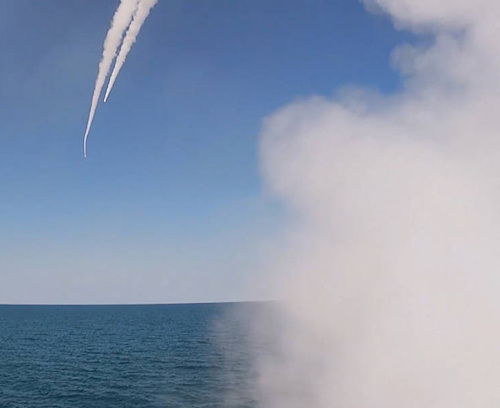 On the naval front, the dispute is totally one-sided. The Ukrainian operational theater falls under the responsibility of the Black Sea Fleet, which, if necessary, can be strengthened by the Caspian Sea Flotilla thanks to the system of internal channels located in Russian territory and which allows the connection of the two seas. The Black Sea Fleet alone has an operational force of about 50 large naval units including cruisers, missile frigates, missile corvettes, landing ships, minesweepers, submarines, etc ... When armed with long-range cruise missiles such as the 3M-54 Kalibr, Russian naval units can deeply strike targets located throughout the Ukrainian territory thus becoming an indispensable power multiplier of the Russian military strategy, as already seen a few years ago in Syria. The Russian ships are also equipped, among others, with the P-700 anti-ship missiles Turkish Granite and P-800 Turkish Onyx which are able to engage Ukrainian naval units 625 and 600 kilometers away respectively, making any kind of response impossible.
On the naval front, the dispute is totally one-sided. The Ukrainian operational theater falls under the responsibility of the Black Sea Fleet, which, if necessary, can be strengthened by the Caspian Sea Flotilla thanks to the system of internal channels located in Russian territory and which allows the connection of the two seas. The Black Sea Fleet alone has an operational force of about 50 large naval units including cruisers, missile frigates, missile corvettes, landing ships, minesweepers, submarines, etc ... When armed with long-range cruise missiles such as the 3M-54 Kalibr, Russian naval units can deeply strike targets located throughout the Ukrainian territory thus becoming an indispensable power multiplier of the Russian military strategy, as already seen a few years ago in Syria. The Russian ships are also equipped, among others, with the P-700 anti-ship missiles Turkish Granite and P-800 Turkish Onyx which are able to engage Ukrainian naval units 625 and 600 kilometers away respectively, making any kind of response impossible.
In the peninsula of Crimea and in that of the Kuban, Russia also has strong departments of coastal troops equipped with different types of anti-ship cruise missiles among which the K-300P deserve to be mentioned Bastion-P they can also be used to hit targets located deep in enemy territory.
Last but not least, another asset available to the Black Sea Fleet is represented by the 2a division of the Guards Naval Aviation with its Su-24M / MR and Su-30SM fighter-bombers optimized for anti-ship use and Tu-134UB-L, An-12, An-26 and An-2 fixed-wing aircraft and wing rotating Mi-8, Ka-27 and Ka-29 in support roles. Needless to say, the forces of the Ukrainian Navy and the Ukrainian Coast Guard are in no way able to compete either numerically or technically with their Russian counterparts.
The Ukrainian naval forces have a decent amount of light ships, but only sufficient for coastal patrol operations, while the only unit of a certain size, the “Hetman Sahaydachniy” frigate, is devoid of anti-ship missile armament. Whether they remain in port or decide to go out to sea, the units of the Ukrainian Navy and the Ukrainian Coast Guard would immediately be subjected to a deluge of fire from Russian ships, coastal troops and even by the Russian Naval Aviation and would all be vanquished in quick succession without the possibility of appeal within minutes of the start of the hostilities. Russia would thus obtain full control and freedom of maneuver both in the Azov Sea and in the Black Sea proper and could decide to implement infiltration operations or real amphibious landings along the entire Ukrainian coast, especially near Mariupol, Melitopol, Nykolayev or Odessa. Sic stantibus rebus, the most rational option available to Ukraine would be to scuttle its naval units and sabotage the port infrastructure in order to deny its use by the enemy.
 The second dimension where the Russian-Ukrainian clash would develop is the air one. At the time of the disintegration of the Soviet Union, Ukraine inherited both a massive air force and an extensive and redundant air defense system, yet years of savage cuts and overselling "home silver" in order to to beat cash had reduced in 2014 the "jewels" of the military instrument of Ukraine in the shadow of themselves. After the heavy losses suffered with the occupation of Crimea and during the Donbass conflict, the Ukrainian Air Forces have a combat core consisting of 12 bombing Su-24s, 17 bombing Su-25s and tactical support, 51 multi-role fighters Mig-29 and 32 piloted Su-27 interceptors, for a total of 112 high-performance jets, supported by 47 armed L-39 trainers, 15 Mi-8 helicopters and a fair number of transport and reconnaissance aircraft. The Ukrainian Land Forces on paper possess important aerial assets consisting of a large fleet of Mi-2, Mi-8 and Mi-26 transport helicopters and Mi-24 attack helicopters, however the availability rates of the Forces-dependent helicopter fleet of Earth are not clear and the percentage of machines capable of flying is probably very low. In any case, it is highly doubtful that Ukrainian helicopters can provide substantial help to their fellow soldiers on the ground having to operate in a context characterized by a strong "saturation" of Russian anti-aircraft missiles.
The second dimension where the Russian-Ukrainian clash would develop is the air one. At the time of the disintegration of the Soviet Union, Ukraine inherited both a massive air force and an extensive and redundant air defense system, yet years of savage cuts and overselling "home silver" in order to to beat cash had reduced in 2014 the "jewels" of the military instrument of Ukraine in the shadow of themselves. After the heavy losses suffered with the occupation of Crimea and during the Donbass conflict, the Ukrainian Air Forces have a combat core consisting of 12 bombing Su-24s, 17 bombing Su-25s and tactical support, 51 multi-role fighters Mig-29 and 32 piloted Su-27 interceptors, for a total of 112 high-performance jets, supported by 47 armed L-39 trainers, 15 Mi-8 helicopters and a fair number of transport and reconnaissance aircraft. The Ukrainian Land Forces on paper possess important aerial assets consisting of a large fleet of Mi-2, Mi-8 and Mi-26 transport helicopters and Mi-24 attack helicopters, however the availability rates of the Forces-dependent helicopter fleet of Earth are not clear and the percentage of machines capable of flying is probably very low. In any case, it is highly doubtful that Ukrainian helicopters can provide substantial help to their fellow soldiers on the ground having to operate in a context characterized by a strong "saturation" of Russian anti-aircraft missiles.
The high-performance jets in service with the Ukrainian Air Forces have all been inherited from the defunct Soviet Air Forces, just like most of those in service with the Russian Air Forces, however only in the last 8 years have they undergone modernization, moreover. limited range, and they do not even have access to significant stocks of BVR missiles (Beyond-Visual-Range, i.e. able to strike beyond the visual range). To give a practical example, a Ukrainian Su-27 and a Russian Su-27 from an aesthetic point of view may look like the same aircraft, but the Russian aircraft have been modernized at least 3 times in the last 10 years while the Ukrainian ones have not. Worse, the Ukrainian Air Forces are completely devoid of AWACS planes and tankers, all of which are critical to modern air warfare.
If at the approach of the Russian air armies, the Ukrainians decide to raise their planes to engage the Russians in a "head to head" clash like two opposing formations of medieval knights, the result would be the total destruction of Kiev's aircraft. .
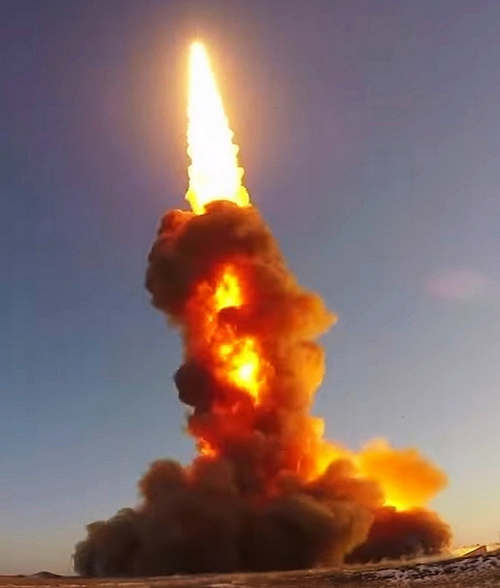
It is however very likely that Moscow wants to minimize the risks in any case and will therefore opt for an immediate and massive bombing of Ukrainian air bases using its arsenal of ballistic and cruise missiles in order to render them useless and destroy as many enemy aircraft on the ground. possible. Ukrainians would then have to fall back on a sort of "air warfare" similar to that used by the Serbs against NATO in 1999.
Air defense is the joint responsibility of the Air Forces and the Ground Forces which as a whole, despite the general decay process of the Ukrainian military instrument, can still count on a rather vast arsenal of "guns". For the defense of their bases, the Ukrainian Air Forces can count on over 500 S-125 missile systems Neva / Pechora, 2K12 Kub, 9K37 Buk, 9K330 Tor, S-300PT and S-300PS.
For the defense of their armored columns, the Ukrainian Ground Forces have about 1.500 pieces of anti-aircraft artillery towed between S-60 cannons and twin machine guns ZU-23-2, 400 self-propelled anti-aircraft ZSU-23-4 "Shilka" and 2K22 “Tunguska”, 350 9K31 mobile short-range anti-aircraft missile systems Lightning-1, 9K35 Lightning-10 and 9K33 Osa, and one hundred 9K37 medium- and long-range missile systems Beech, 9K330 Tor and S-300V1. Although the Ukrainian anti-aircraft deployment is, as already mentioned, considerable from a numerical point of view, it must also be remembered that it has not undergone any type of update for many years, therefore it is vulnerable to a whole series of electronic warfare systems that different countries , including Russia, have introduced into service in recent years. Furthermore, it is not clear whether the various Ukrainian anti-aircraft platforms have actually been amalgamated into an actual IADS (acronym for "integrated air defense system"). Basically, a deployment of anti-aircraft platforms is more effective if it is integrated in such a way that the various systems are able to exchange information in real time in such a way as to be able to deal with incoming threats in the best possible way, acting in unison "as the members of an orchestra ”rather than as many“ soloists ”.
During the Vietnam War, under the leadership of the Soviets and the Chinese, the North Vietnamese succeeded in deploying the most layered and robust integrated anti-aircraft defense system in the world that even the American airpower could not wipe out. Conversely, both in the Iran-Iraq war of 1980-1988 and in the Gulf War of 1991, the Iraqi anti-aircraft defenses (which also inflicted more or less serious losses on the enemies on duty) were completely overwhelmed by the Iranian Air Forces first and by those of the International Coalition, then, because it is enormous network of radars, missile batteries and anti-aircraft guns that Saddam Hussein had bought from the most disparate suppliers regardless of expense had not been structured in the least to "act in unison".
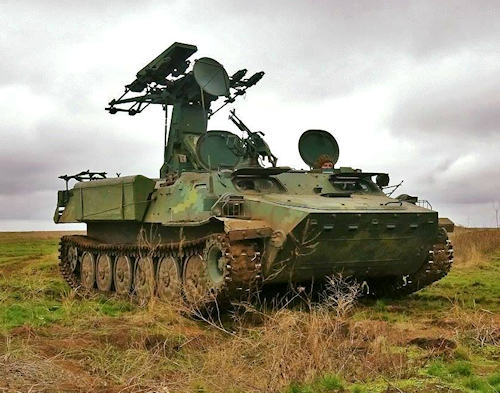 The Ukrainian anti-aircraft defenses undoubtedly constitute a threat to Russian military planners and likewise, even for their numerical consistency alone, they are capable of inflicting significant losses on the Russians, but if the system is not integrated we risk falling back into the aforementioned Iraqi scenario.
The Ukrainian anti-aircraft defenses undoubtedly constitute a threat to Russian military planners and likewise, even for their numerical consistency alone, they are capable of inflicting significant losses on the Russians, but if the system is not integrated we risk falling back into the aforementioned Iraqi scenario.
To get rid of the threat posed by the enemy's air defenses, the Russians must organize a vigorous and sustained “Suppression of Enemy Air Defenses” (SEAD) campaign but it will proceed concurrently with other operations, and not separately.
Sons of the experiences of the Anglo-American wars, from the Second World War until today, we "Westerners" have been literally "raised" thinking that any war must first be anticipated by a long air campaign that aims to "soften" the defenses military of an enemy country and, if necessary, completely destroy its infrastructure.
However, Russian military doctrines are completely different. As the experience of all the "Russian" wars from the Second World War to today teaches us, the military operations of the Air Forces are always integrated with those of the Ground Forces of the Military Districts to which they are assigned. Since, by extension, the V-VS (Russian Air Force) must support the advance of the Ground Forces, this means that the operations of "air artillery" and "suppression of enemy air defenses" must proceed together.
Thus, starting from these data, we can formulate a scenario of an air assault consisting of a minimum of three waves on a daily basis, each consisting of the equivalent of 3-4 regiments and in each of them we would find the first four aircraft ( zveno) of each squadron of each regiment armed with anti-radar missiles, while all the other aircraft would instead be armed with free-fall bombs and / or rockets for interdiction operations on the battlefield in support of the troops.
To maximize the firepower at their disposal, the Russians would immediately deploy, as in Syria, their strategic Tu-95, Tu-22M and Tu-160 bombers which, collectively, are capable of launching salvos of dozens of missiles. cruise ships both in support of anti-radar operations and to paralyze the Ukrainian Armed Forces by hitting their command and control centers.
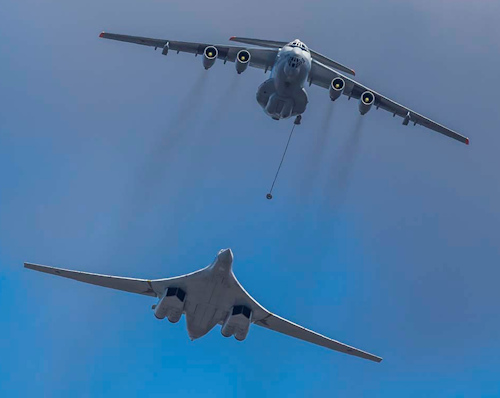
Another aircraft that would play a fundamental role in such operations would be the Su-34, while the Su-24 and Su-25 would be used mainly in troop support. At least at the beginning of military operations the powerful Su-27, Su-30 and Su-35 interceptor fighters would be used in the cover role, to eliminate any Ukrainian aircraft that managed to take off to disrupt Russian air operations but, once once this threat was extinguished, they would also be armed with air-to-ground ammunition to support the other regiments previously engaged in the aforementioned mission. For the attack on Ukrainian anti-aircraft defense systems, Russian aircraft would use dedicated anti-radiation versions of the Kh-15, Kh-25, Kh-28, Kh-31 and Kh-58 missiles. For operations aimed at neutralizing command centers or other high-paying targets, the red star aircraft would use the Kh-22, Kh-29, Kh-35, Kh-38, Kh-55 and Kh-59 cruise missiles instead. in all the versions gradually developed.
It is very likely that the Kh-47M2 aviation-launchable ballistic missile could make its operational debut to hit highly paying and particularly "hardened" strategic targets (such as the bunkers of the high command or the presidency of the republic). Kinzhal released by the Mig-31K interceptors or by the Tu-22M3 bombers while the use of highly experimental weapons or recently entered into production such as the 3M22 supersonic cruise missile tends to be excluded Zircon, the 9M730 nuclear-powered cruise missile burevestnik or the planing supersonic vehicle Avangard.
To facilitate the task of its first assault waves as much as possible, Russia would make extensive use of cyber attacks, such as those we have witnessed in recent days, in order to paralyze the functioning of the Ukrainian state, moreover the air attacks would be supported by an intense use of jammers and electronic warfare systems such as the 1L269 Krasukha-2, 1RL257 Krasukha-4, the 1L267 Moscow-1 or Borisoglebsk 2 to disrupt the operation of the opponent's radar systems to the maximum degree, the Russians could even opt for a complete "shut down" of the enemy country by means of a targeted bombing using a certain number of short-range ballistic missiles (SRBMs) 9K720 Iskander (photo) armed with electromagnetic impulse warheads (EMPs), which would complicate and not just the Ukrainian capacity to coordinate organized resistance.
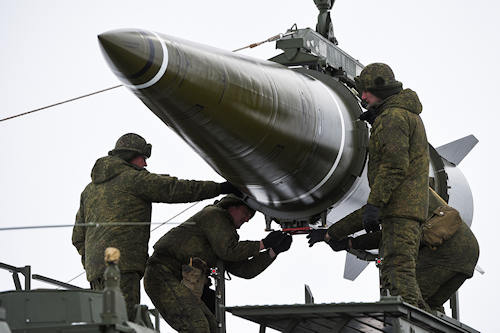
In light of what has been said so far, it is easy to understand that Ukraine's chances of resisting a large-scale attack by Russia are non-existent. The initial Russian assault would be violent and would hit hard all the nerve centers of the country. To the very rich Russian arsenal of tactical ballistic missiles and cruise missiles launched from land, sea and air, Ukraine can oppose only a hundred OTR-21 missiles as "sub-strategic" assets Tochka inherited from the Soviet period while none of the systems that Ukrainian propaganda has trumpeted in recent years like the Sapsan, Korshun-2 or Grom-2 has still entered service.
In the first 40 minutes of the war, Russian precision attacks will disrupt the entire command and control system of the Armed Forces and the government of Ukraine, while within the first 3-4 days of the start of hostilities, the Navy, the Air Force and the units air defense systems will have ceased to exist as coherent combat formations. At the same time, the first assault wave of the Ground Forces of the Russian Federation (about 150.000 men) reinforced by the 50.000 men of the Donbass separatist forces will engage the approximately 125.000 men of the Ukrainian Armed Forces in a head-on clash (equal to about half of the strength nominally framed) that Kiev has deployed on the eastern front in recent months. It is true that at that point the Ukrainians could theoretically also send the other half of their troops backed up by about 900.000 "reservists" and the Armed Forces can be replenished by the National Guard, the Special Purpose Police and by the territorial battalions, exactly as happened in 2014, however it is very difficult to think that the authorities of the country have the ability to effectively mobilize, organize and equip such a mass of men and, in any case, even if by divine miracle they succeeded in such titanic undertaking, to convey such a mass of men and vehicles towards the eastern front, in a completely open space in a strategic tactical situation characterized by the complete Russian domination of the air, would be tantamount to authentic suicide. The entire area of Ukraine located east and southeast of the great Dnieper River would become an immense "settlement area" exactly as the Sinai Peninsula was for the Egyptians during the 1967 Six Day War. The only option left the Ukrainians would be to retreat west of the Dnieper by blowing up bridges and dams in order to deny the Russians the crossing, but it is a tactic that the Germans already tried unsuccessfully against the Soviets during the Second World War.

Surely the Russian High Command (STAVKA) already has contingent plans ready to take control of some strategic areas through the use of the Spetsnaz (perhaps already infiltrated in Ukraine in disguise!), And in any case, even if the Ukrainians succeeded in their intent, Russia would still be able to gain the aforementioned bridgeheads with a few days delay through the joint use of the Navy Infantry of the Black Sea Fleet (as already happened during the Second World War) and the VDV that would be parachuted behind the Ukrainian defense lines as in the textbook scenarios of the Cold War.
The Dnieper line of defense has also been broken (assuming that the Ukrainians actually have contingent plans to transform the river into a line of defense, which is by no means to be taken for granted!) Kiev would only have to capitulate. Certainly some elite units of the Ukrainian Armed Forces, for example the paratroopers of the Air Assault Forces and the elements of the Special Forces would put up a longer resistance but ultimately they too would be overwhelmed both numerically and in firepower by the Russians.
The scenario we have just described is purely theoretical, however those who refuse a priori to believe that the strategic framework in Eastern Europe cannot degenerate and that the Russians "will not have the courage to take the big leap" are mistaken.
To conclude it is now necessary to ask us: what will be the times and the human and material costs of such a cataclysm once the "Fire Swarm" operation is put in place?
As for the temporal duration, this conflict cannot last more than 100 days, but the decisive blows by Russia will be inflicted during the first 3-4 days, after which the real obstacle that the Russians will encounter will be more than anything else constituted by the physical extension of Ukraine rather than its ability to offer further resistance.
During the aforementioned operations it is foreseeable that the Armed Forces of the Russian Federation could suffer the loss of over 10-15.000 men and 45-75 fixed-wing aircraft (not counting helicopters) equal to approximately 1-1,6% of the numerical consistency of the Russian Air Forces, but these are acceptable figures if they are offset on the other side of the scales by the complete annihilation of Ukraine's military capabilities and the eradication of any Western presence in a geopolitical area that has always played and will always play a fundamental role for Moscow.
Photo: MoD Russian Federation / web / US Department of State / Giorgio Bianchi / MoD Ukraine / US DoD

